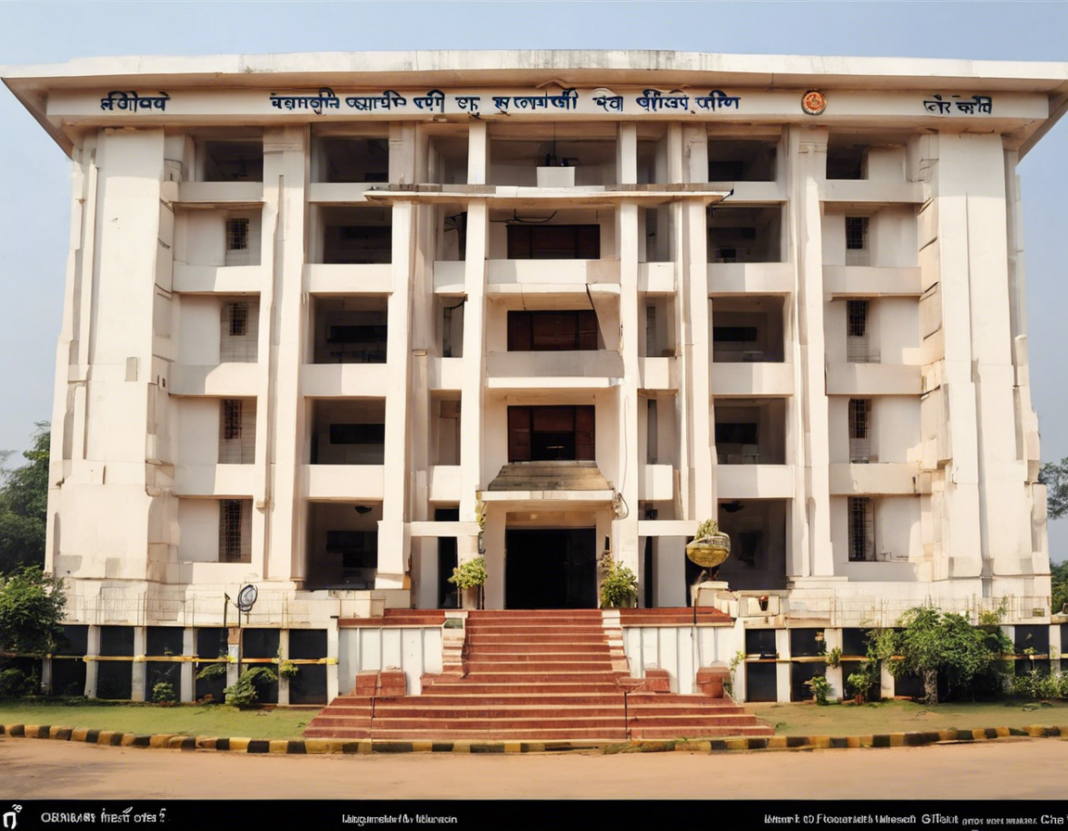Introduction
The High Court of Chhattisgarh is the highest judicial body in the state of Chhattisgarh, India. Established on 1st November 2000 under the Madhya Pradesh Reorganization Act, 2000, the court has been serving as the apex legal institution in the state, ensuring justice, interpreting laws, and upholding the rights of the citizens. In this article, we will delve into the structure, functions, and significance of the High Court of Chhattisgarh, shedding light on its role in the Indian judicial system.
History
The High Court of Chhattisgarh was established following the creation of the state of Chhattisgarh on 1st November 2000. Initially, the court began functioning in a red-tiled three-story structure near the former Legislative Assembly in Bodri. Later, a new building was constructed in Bilaspur, where the court currently operates.
Jurisdiction
The High Court of Chhattisgarh has jurisdiction over the state of Chhattisgarh. It hears appeals and writ petitions that arise from the decisions of the subordinate courts in the state. The court also has the authority to issue writs under Article 226 of the Indian Constitution for enforcement of fundamental rights and other legal rights.
Composition
The High Court of Chhattisgarh consists of a Chief Justice and several other judges whose number is determined by the President of India. The Chief Justice is responsible for the administration of the court and is appointed by the President in consultation with the Governor of the state. The other judges are appointed by the President after consulting with the Chief Justice of India and the Governor of the state.
Functions
The High Court of Chhattisgarh performs various functions to ensure justice and uphold the rule of law in the state. Some of the key functions of the court include:
-
Adjudication: The court hears and decides civil and criminal cases that are appealed from the lower courts or brought before it through writ petitions.
-
Interpretation of Laws: The High Court interprets laws and legal provisions to ensure their proper application in various cases.
-
Protection of Rights: One of the essential functions of the court is to protect the fundamental rights of the citizens guaranteed under the Indian Constitution.
-
Judicial Review: The court exercises the power of judicial review to ensure that the actions of the government and other authorities are within the bounds of the Constitution.
-
Administrative Functions: The High Court also performs administrative functions, including the appointment and supervision of district court judges and other court staff.
Significance
The High Court of Chhattisgarh plays a crucial role in the legal system of the state and the country as a whole. Some of the key aspects that highlight its significance include:
-
Dispensation of Justice: The court is instrumental in dispensing justice and ensuring that the rights of the citizens are protected.
-
Upgrading Legal Standards: Through its judgments and interpretations, the court contributes to the development of legal standards and principles in the state.
-
Maintaining Law and Order: The court’s interventions help in maintaining law and order by upholding the rule of law and ensuring accountability.
-
Safekeeping of Constitution: As a guardian of the Constitution, the High Court of Chhattisgarh protects the fundamental rights of the citizens and ensures that the government functions within its constitutional limits.
Challenges
While the High Court of Chhattisgarh plays a significant role in the state’s legal system, it faces several challenges in fulfilling its responsibilities effectively. Some of these challenges include:
-
Backlog of Cases: Like many other courts in India, the High Court of Chhattisgarh grapples with a backlog of cases, which can delay the delivery of justice.
-
Resource Constraints: The court may face resource constraints in terms of infrastructure, manpower, and technology, affecting its efficiency.
-
Complex Legal Issues: The court often deals with complex legal issues that require in-depth analysis and expertise, posing challenges to timely resolution.
-
Public Perception: Building public trust and confidence in the judiciary is crucial, and any negative perception can impact the court’s credibility.
Future Outlook
To address the challenges and continue its crucial role in the legal system, the High Court of Chhattisgarh can focus on several areas for improvement. These include:
-
Technology Adoption: Leveraging technology for case management, virtual hearings, and e-filing can enhance the court’s efficiency and reduce delays.
-
Training and Capacity Building: Continuous training and capacity building programs for judges and staff can improve their skills and knowledge, leading to better judicial outcomes.
-
Specialized Benches: Establishing specialized benches for specific types of cases can streamline the adjudication process and ensure expertise in dealing with complex legal issues.
-
Public Awareness Campaigns: Engaging in public awareness campaigns to educate citizens about the court’s functions, processes, and rights can enhance transparency and trust.
FAQs (Frequently Asked Questions)
-
What is the hierarchy of courts in India?
In India, the hierarchy of courts starts with the District Courts, followed by the High Courts in each state or group of states, and finally, the Supreme Court, which is the highest judicial body in the country. -
How can one file a petition in the High Court of Chhattisgarh?
Petitions can be filed in the High Court of Chhattisgarh through the prescribed format available on the court’s website or by visiting the court registry in person. -
What is the tenure of a High Court judge in India?
High Court judges in India retire at the age of 62, though they can resign earlier if they choose to do so. -
Can the decisions of the High Court of Chhattisgarh be appealed?
Yes, decisions of the High Court of Chhattisgarh can be appealed in the Supreme Court of India under certain circumstances. -
Is the High Court of Chhattisgarh bound by its own judgments?
Yes, the High Court of Chhattisgarh is generally bound by its own judgments, though there may be exceptions in certain circumstances. -
What is the significance of writ jurisdiction of the High Court?
The writ jurisdiction of the High Court enables it to enforce fundamental rights and other legal rights of the citizens, ensuring that authorities and individuals act within the limits of the law. -
How are judges appointed to the High Court?
Judges of the High Court are appointed by the President of India after consultation with the Chief Justice of India and the Governor of the respective state. -
Can the High Court of Chhattisgarh hear cases outside its jurisdiction?
The High Court of Chhattisgarh primarily hears cases within its jurisdiction, but in certain circumstances, it may also have jurisdiction over cases originating outside the state. -
What is the role of the Chief Justice of the High Court?
The Chief Justice of the High Court is responsible for the administrative functions of the court, including allocation of cases, supervision of judicial work, and appointment of court staff. -
Does the High Court of Chhattisgarh have the power to punish for contempt of court?
Yes, the High Court of Chhattisgarh, like other courts in India, has the power to punish for contempt of court to uphold the dignity and authority of the judiciary.
Conclusion
In conclusion, the High Court of Chhattisgarh stands as a pillar of justice in the state, upholding the rule of law, protecting rights, and ensuring accountability. By addressing its challenges, embracing technology, and enhancing efficiency, the court can continue to serve as a beacon of justice and a guardian of the Constitution. Its significance in the legal landscape of India cannot be understated, and its role in shaping the legal standards and protecting the rights of the citizens remains paramount.






